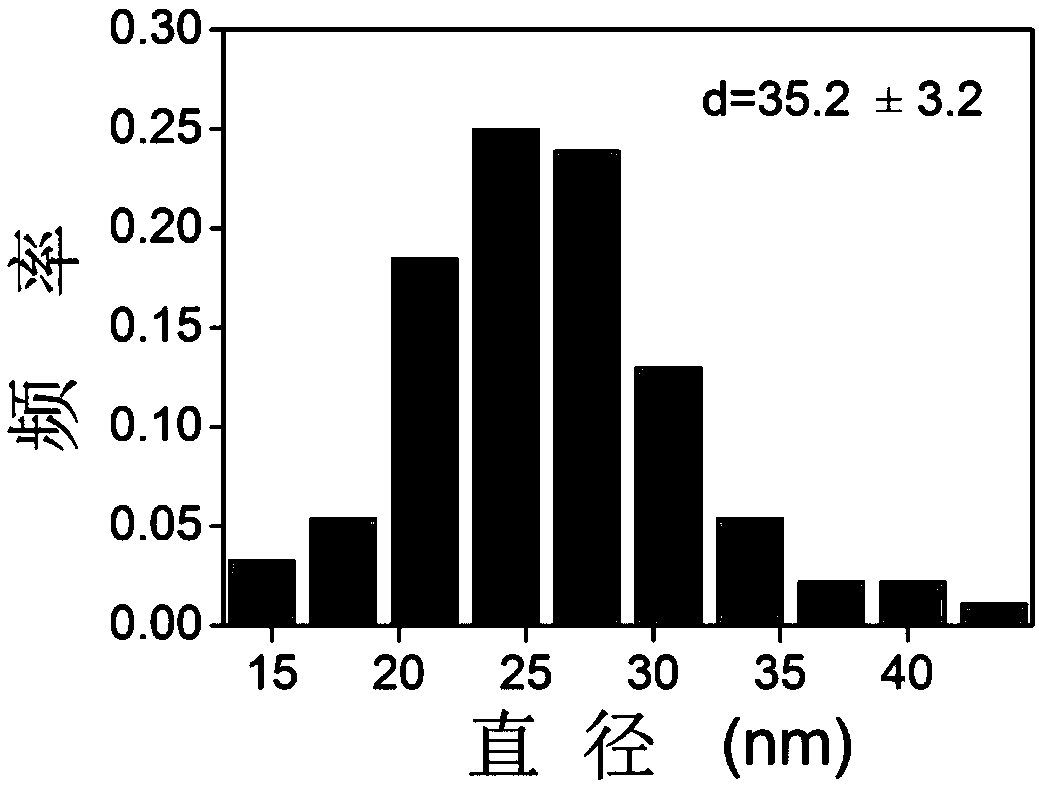Synthesis method of EPS-RB nanometer particles for photodynamic bacterium resistance
An EPS-RB, photodynamic antibacterial technology, applied in the field of biotechnology and nanomaterials, can solve the problems of high cytotoxicity, poor antibacterial effect, and poor biological safety, and achieve low cytotoxicity, good photodynamic antibacterial effect, and small size uniform effect
- Summary
- Abstract
- Description
- Claims
- Application Information
AI Technical Summary
Benefits of technology
Problems solved by technology
Method used
Image
Examples
Embodiment 1
[0036] Example 1 Lactobacillus plantarum exopolysaccharide EPS and photosensitizer Rose Bengal (RB) synthesize EPS-RB nanoparticles:
[0037]Make a 1mg / mL solution of exopolysaccharide and let it stand overnight; weigh 2-5mg RB, 5-12mg EDC·HCl and 2-64.8mg NHS, dissolve in 9mL DMSO, and react at room temperature and 90rpm for 1-3h Finally, it was mixed with the prepared polysaccharide solution, reacted overnight at room temperature and 90 rpm, then dialyzed with DMSO for 72 hours, then dialyzed with water for 48 hours, and stored in freeze-dry.
Embodiment 2
[0038] The morphology observation of the synthesized EPS-RB nanoparticle of embodiment 2:
[0039] 10 μL of the EPS-RB nanoparticles obtained in Example 1 above was dropped onto a 400-mesh copper grid for transmission electron microscope observation. EPS-RB nanoparticles have a spherical structure and are evenly distributed ( figure 1 ). The particle size distribution statistics show that the nanoparticle size is about 35.2nm ( figure 2 ).
Embodiment 3
[0040] Embodiment 3EPS-RB nanoparticle stability evaluation:
[0041] Stability evaluation is carried out by measuring particle size and zeta potential. The EPS-RB nanoparticles were dissolved in 0.9% NaCl to form a 10uM solution, and then the particle size was measured by DLS, and the charge was measured by a zeta potentiometer.
PUM
| Property | Measurement | Unit |
|---|---|---|
| Particle size | aaaaa | aaaaa |
Abstract
Description
Claims
Application Information
 Login to View More
Login to View More - R&D
- Intellectual Property
- Life Sciences
- Materials
- Tech Scout
- Unparalleled Data Quality
- Higher Quality Content
- 60% Fewer Hallucinations
Browse by: Latest US Patents, China's latest patents, Technical Efficacy Thesaurus, Application Domain, Technology Topic, Popular Technical Reports.
© 2025 PatSnap. All rights reserved.Legal|Privacy policy|Modern Slavery Act Transparency Statement|Sitemap|About US| Contact US: help@patsnap.com



